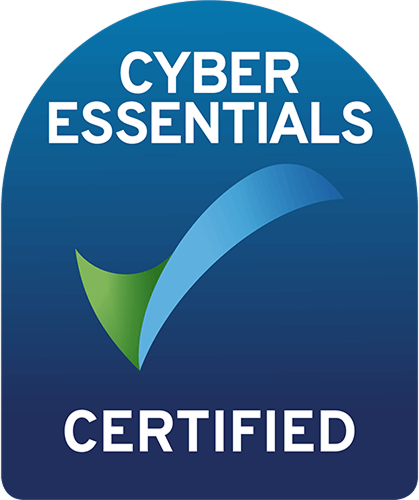
Strategies for Businesses to Offset the Impact of the NI Increase
Posted on May 23, 2025
Businesses are increasingly concerned about rising employment costs, especially with the recent increase in employer National Insurance contribution. Fortunately, there are several government-supported initiatives and HR / payroll strategies that can help businesses lower NIC expenses while staying fully compliant with regulations.
-
Employment Allowance – Claim Up to £10,500 from April 2025
One of the most straightforward methods to reduce employer NICs is by claiming the Employment Allowance. This allowance enables eligible businesses to decrease their NIC liability by up to £10,500, an increase from the previous £5,000 in 2024.
Eligibility Criteria:
To determine if your business qualifies for the Employment Allowance, consider the following criteria:
- Businesses with Class 1 NIC liabilities under £100,000 in the previous tax year.
- Limited companies with more than one employee on the payroll.
- Sole traders and partnerships that employ staff.
To apply, you can use HMRC’s payroll software or request assistance from your payroll provider to manage the claim on your behalf.
Potential Savings:
The savings an employer can achieve depend on their annual NIC liability. With the Employment Allowance increasing to £10,500 in April 2025, many small businesses can eliminate or significantly reduce their employer National Insurance costs.
Examples:
Small Business with Lower NIC Liability:
A business with an annual NIC liability of £9,000 can completely offset this amount using the Employment Allowance, resulting in £0 employer NICs for the year.
Medium-Sized Business with a NIC Liability Above £10,500:
A business with an annual NIC liability of £15,000 will only pay NICs on the amount exceeding £10,500. This results in a final NIC bill of £4,500 instead of £15,000, representing a 70% reduction.
Larger Business Exceeding the £100,000 NIC Threshold:
Businesses paying over £100,000 in Class 1 NICs annually do not qualify for the Employment Allowance. However, they can still leverage salary sacrifice and pension salary exchange schemes to reduce NIC costs.
By understanding and utilising these strategies, businesses can effectively manage their NIC liabilities and improve their financial health while remaining compliant with UK regulations.
How to Claim the Employment Allowance
Employers can claim the Employment Allowance using their payroll software, or through HMRC’s Basic PAYE Tools. Once claimed, the allowance is automatically applied, reducing employer National Insurance Contributions (NICs) throughout the tax year until the full amount of £10,500 is utilised.
-
Salary Sacrifice Schemes
Salary sacrifice arrangements can effectively reduce an employer’s National Insurance Contributions (NICs). When employees opt to exchange a portion of their salary for non-cash benefits—such as pension contributions, cycle-to-work programs, or electric vehicle schemes—their gross taxable salary is reduced. Consequently, employers pay NICs on this lower salary amount, resulting in cost savings. For instance, through a pension salary exchange, employers can save 13.8% in NICs on the sacrificed amount.
The Pension Salary Exchange is particularly effective, allowing employers to reduce NICs by restructuring pension contributions. For example, a company with 50 employees, each earning £36,000, can save £12,400 annually in NICs by using salary sacrifice for pensions, as the employer contributes directly to pensions, avoiding NICs on the exchanged amount.
Additional Benefits of Salary Exchange for Employers
Substantial Cost Savings: Employers can achieve significant reductions in National Insurance Contributions (NICs), leading to enhanced financial efficiency.
Enhanced Employee Pension Contributions: Employees enjoy increased pension contributions without any reduction in their take-home pay, promoting long-term financial security.
No Adverse Effects on Salary-Related Benefits: Salary sacrifice does not affect salary-related benefits such as bonuses, overtime, or redundancy pay, ensuring that employees’ overall compensation remains intact.
Attractive Incentive for Talent Retention: Implementing a salary sacrifice scheme serves as a compelling incentive to attract and retain top talent by boosting pension contributions, thereby enhancing overall employee satisfaction and loyalty.
More on salary sacrifice schemes can be found here ::
-
Hire Apprentices and Reduce NIC Costs
Employers who hire apprentices under the age of 25 can benefit from significant savings, as they are exempt from paying Class 1 National Insurance Contributions (NICs) on earnings up to the Upper Earnings Limit, which is set at £967 per week for 2025.
Advantages of Hiring Apprentices
0% Employer NICs: Enjoy a complete exemption from employer NICs for apprentices under 25, reducing your overall employment costs.
Government Funding: Access apprenticeship levy funding to cover training expenses, making it more affordable to develop skilled employees.
Enhanced Staff Retention: By training employees in-house, you can improve staff loyalty and retention, ensuring a more stable and committed workforce.
You can find the rules for hiring apprentices here.
-
Consider a blended workforce
A blended workforce is a strategic staffing approach that combines full-time employees with independent contractors, temporary staff, freelancers, and part-time workers. The business landscape has undergone significant changes since the onset of the pandemic in 2020, compelling organisations to adopt more agile methods for accessing in-demand skills and integrating remote workers. A blended workforce offers the flexibility and responsiveness that modern businesses require.
Should a Company Implement a Blended Workforce?
Adopting a blended workforce can provide organisations with a competitive edge by granting access to a diverse pool of skilled talent as needed. This model enables companies to effectively manage a combination of consultants, freelancers, contractors, and temporary employees without the burden of long-term commitments. The flexibility inherent in this structure allows organisations to adapt staffing levels in response to fluctuating demands throughout various stages of business operations. By leveraging a blended workforce, companies can tap into top talent from around the globe, fostering a competitive environment that attracts the best professionals.
Benefits of a Blended Workforce
Flexibility and On-Demand Staffing: The ability to scale staffing levels up or down based on business needs provides a strategic advantage. Organisations can quickly hire individuals with specific skills when and where they are needed.
Access to Specialised Talent: This flexible staffing model enhances access to employees with Specialised skills and expertise that may not be available within the existing workforce.
Reduced Staffing Costs: Contingent employees (contractors) typically do not receive benefits such as health insurance, bonuses, or paid time off, allowing organisations to budget more effectively for salaries without incurring the costs associated with full-time staff. In addition, contractors are usually employed through their own limited companies and consequently you don’t payroll them and pay NI.
Lower Operating Expenses: Hiring remote, contingent workers can minimise the need for extensive physical office space, resulting in significant savings on rent and overhead costs.
Motivated Workforce: Many contingent workers are driven to deliver high-quality results, as they may seek to extend their contracts or secure full-time positions.
Disadvantages of a Blended Workforce
While a blended workforce presents several benefits, there are also potential challenges to consider:
Managing Remote Teams:
Although lower overhead costs are appealing, managing remote workers across different time zones can be complex. Implementing effective digital communication tools and protocols is crucial for success.
Risk of Disengagement:
Contingent workers, whether remote or onsite, may feel disconnected from the organisation and receive less feedback compared to permanent employees. They are often excluded from key meetings and discussions, which can lead to feelings of isolation.
Higher Turnover Rates:
Independent contractors and freelancers typically experience higher turnover, as they may have less commitment to any single organisation.
Increased Hourly Rates:
While organisations save on benefits, contractors often charge higher hourly rates than their full-time counterparts, which can impact overall budget considerations.
Compliance Challenges:
Managing a blended workforce requires a thorough understanding of employment laws and regulations. Properly classifying workers as independent contractors is essential to avoid misclassification risks and potential fines.
In Summary
Reducing National Insurance costs can be straightforward and effective. By utilising strategies such as the Employment Allowance, salary sacrifice schemes, pension planning, and strategic workforce management, businesses can legally decrease payroll expenses while staying compliant with HMRC regulations. Lastly, don’t forget, always check your monthly payroll thoroughly, you will be surprised how many mistakes can be found which lead to costs increasing.
If you’re uncertain about the optimal approach for your business, our specialists HR team at SME HR Consultancy is here to assist. We can help you identify potential savings opportunities and implement the most suitable methods for reducing National Insurance Contributions.
[/subscribe_to_unlock_form]
If you need support understanding or preparing for the proposed legislative changes please feel free to reach out to us:
+44 (0) 2382 518 004
info@smehrconsultancy.com
www.smehrconsultancy.com


